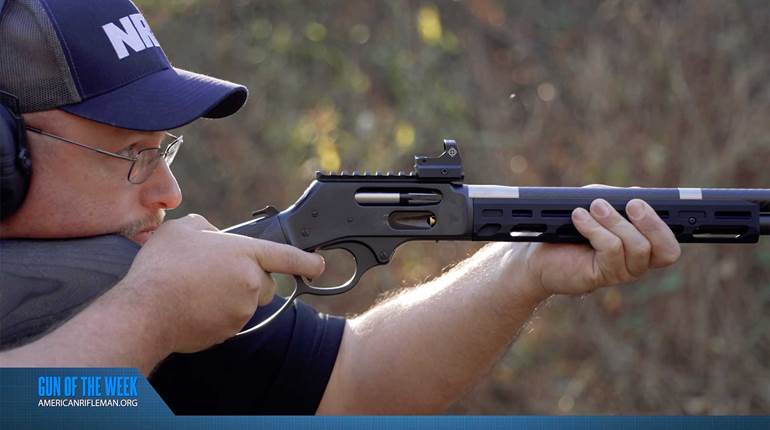While there were many arms used by the British during the Napoleonic Wars, some of the underappreciated small arms are the guns used on board the ships of the Royal Navy. On this "American Rifleman Television" I Have This Old Gun segment, we take a look at one of the workhorse pistols of the British naval arsenal: the Pattern 1801 Sea Service pistol.
"During the Napoleonic Wars, Britain held its enemies, including France, at bay with the Royal Navy," NRA Media Editorial Director Mark Keefe said. "And those sailors, they actually had to fight on board ship. And one of the guns that they did it with was the Pattern 1801 Sea Service Pistol."

The Pattern 1801 Sea Service Pistol measured 20" in overall length with its 12" barrel. The smoothbore barrel was of .56 caliber, and beneath it, a wooden ramrod sat inside of a ramrod channel, retained by a single brass ramrod pipe. The pistol used a flintlock action with a flat-sided hammer, and the walnut stock was capped at the base of the grip with a brass pommel head.
"A Sea Service Pistol is called a Sea Service Pistol because it's used by the Navy. And you say, 'Well, why would you need a small arm when ships are banging away at one another?' Well, that isn't the way it always worked," American Rifleman Field Editor Garry James said. "A lot of times, they would come to close quarters so that one could capture the other one's ship, which was an important thing back then because, you have to realize, you didn't just capture the ship for for king and country or queen and country. You captured the ship because everybody got prize money. Not a bad deal. So it was worthwhile not to try to sink a ship, but to try to capture them. Consequently, small arms were very, very important."

One of the notable elements of the Sea Service Pistol was the addition of a long, metal belt hook on the left side of the gun that made it possible to stash the gun inside of a waist belt or cross belt. This feature was particularly necessary, as British sailors were not equipped with holsters.
"The only thing that really changes even into the first half of the 19th century with the sea service guns in British military service are the barrels are shortened up a little bit," American Rifleman Executive Editor Evan Brune said. "The 1801 has a 12" barrel, and they realize you don't really need a 12" barrel on these guns, and they end up cutting them back to 9". Well, that's it. If that was the only thing they're changing, it didn't make sense to keep all of these existing Pattern 1801s at 12". So a lot of these guns end up being cut down to the later 1816 pattern."
To watch complete segments of past episodes of American Rifleman TV, go to americanrifleman.org/artv. For all-new episodes of ARTV, tune in Wednesday nights to Outdoor Channel 8:30 p.m. and 11:30 p.m. EST.























